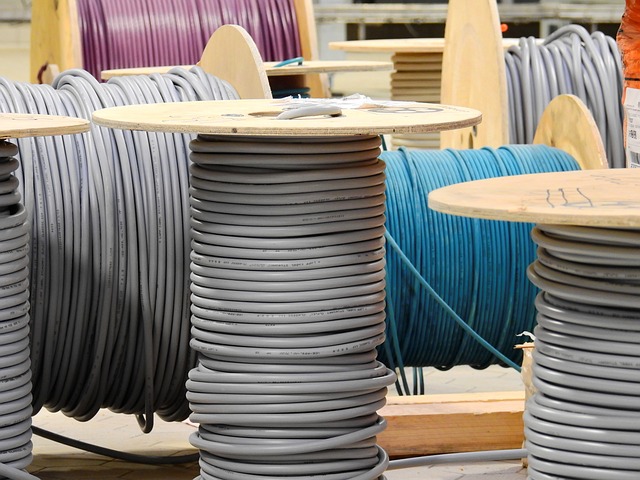
Choosing the right wire or cable for your project is a critical step in ensuring the safety, efficiency, and functionality of any electrical system. Whether you’re working on a residential wiring project, setting up an industrial network, or planning an outdoor installation, selecting the appropriate wire or cable requires consideration of several important factors. In this article, we’ll explore the key elements to consider when choosing wires and cables, provide examples of which types to use for various applications, and offer guidance to help you make the best decision for your project.
Key Factors to Consider When Choosing Wire or Cable
Ampacity and Electrical Load
Ampacity refers to the maximum amount of electrical current a wire or cable can safely carry without overheating. The electrical load, or the total amount of current that will be passing through the wire, plays a crucial role in determining the appropriate wire gauge. For example, thicker wires (lower gauge numbers) can handle more current than thinner wires (higher gauge numbers). It’s essential to select a wire with the appropriate ampacity to avoid electrical hazards such as overheating or fire.
Wire Gauge
The wire gauge is another critical factor when selecting a wire for your project. The American Wire Gauge (AWG) system is commonly used to measure the diameter of wires. A smaller gauge number represents a thicker wire, while a larger number represents a thinner wire. For example, a #12 AWG wire is thicker than a #14 AWG wire. Generally, thicker wires are used for higher current loads, such as powering large appliances or machinery, while thinner wires are suitable for low-power applications.
Material
Wires and cables are typically made from copper or aluminum. Copper is the preferred material for most electrical projects due to its excellent conductivity, flexibility, and durability. Copper wires are widely used in residential, commercial, and industrial wiring. Aluminum, while lighter and cheaper than copper, is less conductive and often requires a larger gauge to carry the same electrical load. However, aluminum cables are still used in large-scale power distribution and outdoor applications.
Insulation Type
The insulation material around the wire protects it from environmental factors such as heat, moisture, and chemicals. Depending on the location and conditions of your project, you’ll need to select the right type of insulation. For example, THHN (thermoplastic high-heat nylon-coated) wire is commonly used in indoor applications due to its heat resistance and durability. For outdoor or underground projects, THWN (thermoplastic heat and water-resistant nylon-coated) wire is preferred because it provides additional protection against moisture.
Voltage Rating
Each wire and cable has a specific voltage rating that indicates the maximum voltage it can safely carry. It’s important to ensure that the voltage rating of the wire or cable is compatible with the electrical system in which it will be used. Using a wire with a lower voltage rating than required could result in overheating, insulation failure, or other electrical hazards.
Environmental Conditions
If the wire or cable will be used in harsh or challenging environments, such as areas exposed to moisture, chemicals, or extreme temperatures, you’ll need to choose a wire that can withstand these conditions. For outdoor applications, look for wires labeled as UV-resistant or weatherproof, and for underground installations, choose cables designed for direct burial, such as UF-B (underground feeder) wire.
Examples of Wires and Cables for Different Projects
- Residential Wiring: For indoor wiring in homes, NM-B (non-metallic sheathed cable) is commonly used for outlets, lighting, and appliances. This cable consists of insulated copper conductors encased in a flexible plastic sheath.
- Outdoor Projects: When running wiring outside for landscape lighting, outdoor electrical outlets, or pool equipment, THWN-2 or UF-B cable is often used. These cables are designed to resist moisture and can be buried directly in the ground.
- Industrial and Commercial Wiring: In industrial settings, where equipment may draw large amounts of current, MC (metal-clad) or AC (armored cable) is commonly used. These cables provide additional protection against physical damage and are suitable for use in exposed locations or where high electrical demand is required.
- Networking and Data Transmission: For data transmission and communication systems, Cat5e or Cat6 Ethernet cables are widely used to provide fast and reliable connections between devices in home or business networks.
Conclusion
Choosing the right wire or cable for your project is essential for ensuring electrical safety, efficiency, and long-term performance. Factors such as ampacity, wire gauge, material, insulation, voltage rating, and environmental conditions must all be carefully considered when selecting the appropriate wire or cable. Whether you’re wiring a home, working on an outdoor project, or setting up an industrial system, using the correct type of wire or cable will ensure your project is safe, compliant, and built to last.
By understanding these key factors and consulting relevant codes and guidelines, you can confidently select the right wire or cable for your specific application, reducing the risk of electrical hazards and ensuring optimal performance.

